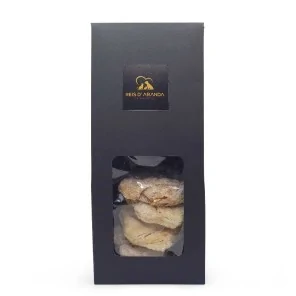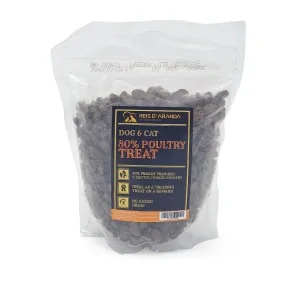The Tornjak originated from genetically homogeneous, almost extinct, indigenous shepherd dogs. These dogs have...
THE PORTUGUESE SHEPHERD DOG
INTRODUCTION
The Portuguese Shepherd is a breed of dog originating in Portugal, precisely in the mountains from which it takes its name. In the past it was used to guide and guard different types of livestock: sheep, goats, horses, cattle and pigs.
THE ORIGIN OF THE PORTUGUESE SHEEPDOG
According to some authors, this dog comes from the Brie Shepherd Dog, but probably has a common origin with the Catalan Shepherd Dog or the Pyrenean Longhair Shepherd Dog, as it is very similar to both.
Therefore, this shepherd would descend from dogs brought to Portugal by the Romans, i.e. from the same ancestors as the Bergamo shepherd. The breed only became widespread in Portugal (in the context of dog shows) from 1957 onwards. This dog is mainly used in the Alentejo region, where it guards the flocks.
THE STANDARD OF THE PORTUGUESE SHEEPDOG
GENERAL APPEARANCE: A medium sized, sub-longhorn dog. Appreciable hardiness and sobriety, extremely agile and swift with a wide and suspended movement. Long hair with goat hair type texture without undercoat. He has the appearance and attitudes of an ape for which he is known in this region as the ‘monkey dog’.
IMPORTANT PROPORTIONS: The length of the body is approximately 10% greater than the height at withers. The depth of chest is less than 50% of the height at withers. The length of the muzzle is 2/3 of the length of the skull, the width of the skull is slightly less than the length of the skull.
HEAD: Medium size (mesocephalic), strong, broad, neither long nor large.
CRANIAL REGION:
SKULL: With a tendency to be square, slightly longer than broad, divergent longitudinal axes of skull and muzzle, convex on both axes but more so laterally. Superciliary arch not prominent. Pronounced frontal furrow extending towards the middle of the forehead, the areas between the ears are flat with an apparent occipital protuberance.
STOP: Well defined.
FACIAL REGION:
TRUFA: Well defined, slightly elevated; the nostrils are broad. It is rounded, cylindrical and truncated almost vertically. Preferably black, may be liver colour in yellow or brown animals but should always be darker in colour than the coat.
NECK : Short, measuring about 2/3 of the length of the skull.
Almost cylindrical; the width should be in proportion to its length and shape. Straight or slightly concave in profile.
BELPHOS: Close fitting, not overlapping. Thin, firm, almost straight cut. Edges of the same colour as the nose.
JAWS / TEETH : Normally developed. Both jaws in perfect opposition. Complete dentition of 42 solid white teeth. Scissor bite, a pincer bite is acceptable.
EYES: Medium sized, rounded, preferably dark in colour, but may be hazel or amber brown in yellow animals, set level without being prominent. Expression friendly, intelligent but docile, horizontal, eyelids black or always darker than the colour of the coat and in accordance with the colour of the nose.
EARS: Set on high; drooping, not folded back when not cropped; straight when cropped. Triangular in shape. Thin, soft skin. Medium size, about the same length as width (approximately 10 cm).
NECK: Attaches harmoniously to the head and the trunk. Straight and slightly ascending, of proportionate thickness. No dewlap.
BODY :
UPPER LINE : Straight or slightly sloping.
CROSS: Strong and harmoniously united with the neck and back.
BACK: Straight or slightly sloping and long. Well muscled, generally twice the length of the loin.
LOIN: Short and arched when viewed in profile; broad and curved when viewed from the front, strongly muscled and well attached to the back and croup.
Croup: Slightly prominent and slightly sloping, smooth, of medium length and width, strongly muscled.
CHEST: To elbow level, medium width and depth, ribs slightly sprung with an oval ribcage sloping backwards. The forechest is prominent, broad well back and broad.
BELLY AND FLANKS: Uniform and slightly ascending.
TAIL: Set on high, pointed, reaching to the level of the claws, tapering from the base. Long and covered with abundant hair.
When the dog is in motion it is the extension of the topline or may curve slightly over the topline but never curves over the back.
LIMBS
FOREQUARTERS: Strong, well laid back when viewed from the front and profile and well separated, the distance from withers to elbows is slightly less than from elbow to ground.
Shoulders: Medium length with a 45° slope, well muscled, shoulder blade and humerus set at an angle of 90°.
ARM: Strong, medium length, set at an angle of 45 degrees, well muscled.
ELBOW: Parallel, close to the chest and with a humerus-radius angle of 135°.
FOREARM: Long, vertical and well muscled with bones of medium thickness.
BODY: Lean. Not prominent.
Pastern: Of normal size and medium length. From top to bottom and from back to front, not too sloping.
HANDS: Rounded, not flattened. The fingers are long and close together, with a pronounced curve. The nails are long, strong and black, or darker than the coat. The pads are thick and strong.
HINDQUARTERS: Of medium width, plumb when viewed from the front or rear, strong, giving a perfect impression of strength and agility.
Upper thighs: Of medium length and width, well muscled.
LEG: Slightly sloping, long and well muscled. Strong bone.
HIP: Medium width, low set, strong and lean.
METATARSUS: Of normal size, though strong, of medium length.
Not very sloping from top to bottom and from front to back. Single and double dewclaws may be present.
FEET: Identical to the front feet in all respects.
GAIT / MOVEMENT: Predominantly moves at a light, suspended trot with long reach. The gallop, when the work demands it, is energetic.
SKIN: Thick, supple, not too tight. Inner and outer mucous membranes preferably pigmented.
COAT: Smooth or slightly wavy, long with a somewhat rough texture preferably goat type hair forming a long beard, whiskers and eyebrows, but not covering the eyes, dense and evenly distributed over the body including the interdigital spaces. Hair of medium thickness without undercoat or undercoat. Very long hair on head, body and limbs, including interdigital spaces.
COLOUR: The colours are:
- Yellow
- Brown
- Grey
- Reddish
- Wolf grey
With light and dark coloured varieties, and black more or less marked with tan, with or without white hairs mixed in, but never with white patches, except for a small patch on the chest region.
SKIN: The internal and external mucous membranes are preferably pigmented; the skin is not too tight.
SIZE:
- Males : 45 to 55 cm.
- Females: 42 to 52 cm.
WEIGHT:
- Males and Females: 17 to 27 kg.
FAULTS: Any departure from the foregoing points should be considered a fault and the seriousness with which the fault should be regarded should be in exact proportion to its degree and its effect upon the health and welfare of the dog.
SERIOUS FAULTS:
- Dogs showing nervousness or unbalanced temperament.
- Incorrectly set teeth, absence of two premolars (except PM1).
- Poorly marked naso-frontal depression.
- Pointed nose.
- Overlapping or pendulous lips.
- Eyes light, small, or not round, or oblique.
- Ears folded or rose-shaped.
- Too narrow forechest.
- CHEST: Shallow, flat ribcage.
- Top line of the trunk concave, or too sloping.
- Croup horizontal or too sloping.
- Underline too sloping.
- EXTREMITIES: sloping forefeet or hind feet, cow hocks. HINDQUARTERS: not too straight.
- Tail set on too low, short, or curled over the back when the dog is at rest.
- White nails.
- Hair not harsh, or not long enough.
- Large white patch on the chest region.
- Undefined tan markings.
- Movement not sufficiently wide, not suspended.
- Elbows turned out, too close together.
DISQUALIFYING FAULTS:
- Aggressiveness or extreme shyness.
- Any dog showing clear signs of physical or behavioural abnormalities.
- GENERAL APPEARANCE: Lymphatic, light boned. Severe deviations from important proportions.
- Narrow, long head.
- Flat, round or narrow skull.
- Ears set on low, too wide apart, erect or semi-erect.
- Nasal bridge of nose with a convex profile.
- Mandibles: Overshot or undershot, absence of more than two premolars (except PM1).
- PIGMENTATION: Total absence of pigmentation on nose, eyelids, lips (Albinism).
- Amputated tail, or lack of tail from birth.
- Short, curly coat or with presence of undercoat.
- COLOUR: White on the extremities of the limbs. Absence of tan markings on brown, grey or black adults.
- GAIT / MOVEMENT: Too limp or heavy, with severe deviation of forelegs, weakness.
- SIZE: Above or below established limits.
N.B.:
- Male dogs should have two apparently normal appearing testicles fully descended into the scrotum.
- Only functionally and clinically healthy dogs, with breed typical conformation, should be used for breeding.
HEALTH OF THE PORTUGUESE SHEPHERD DOG
This breed is little known and not much is known about hereditary diseases that may affect it. However, because of its low popularity, it has not been subjected to indiscriminate breeding or excessive artificial selection, so it may be one of the dog breeds with few hereditary problems.
THE PERSONALITY OF THE PORTUGUESE SHEPHERD DOG
These dogs are very intelligent, active and affectionate with their own kind. They are also watchful and alert dogs that can perform perfectly well as guard dogs. They tend to be very affectionate with their own and form a special bond with a person. However, they are also somewhat reserved with strangers. They can be aggressive towards other dogs of the same sex, but tend to get along well with dogs and other animals they have grown up with. It is good to start socialising these dogs at an early age to make them a little friendlier to strangers. Being very intelligent dogs, Portuguese Shepherds do well in different specialities of dog training. They can be trained with various techniques, but positive training gives better results than traditional training. Because of their high exercise demands, these dogs do not make good pets for sedentary families who do not enjoy outdoor activities. They do make good pets for active families and, better still, those living in rural areas.
The exercise needs of Portuguese Shepherds are high. They are not suited to flat living and need plenty of space to trot and run. It is best if they live in rural areas, where they can perform herding duties.
It is quite affectionate forming strong bonds with its humans, has the tendency to be quite devoted and loyal, can be stubborn and not very obedient, but learns quickly despite being dominant.
CONCLUSION
This medium sized breed is extremely intelligent and very cheerful. These dogs are loyal to their owners and work constantly to protect the livestock or property assigned to them. Because of this, Portuguese Shepherds can become wary of strangers.
In attitude and appearance, they are reminiscent of monkeys, which has earned them the nickname ‘monkey dog’ in their native country. They are famous for the way they keep livestock in the fields and bring back animals that stray from the group.
Leave a comment
Log in to post comments
















